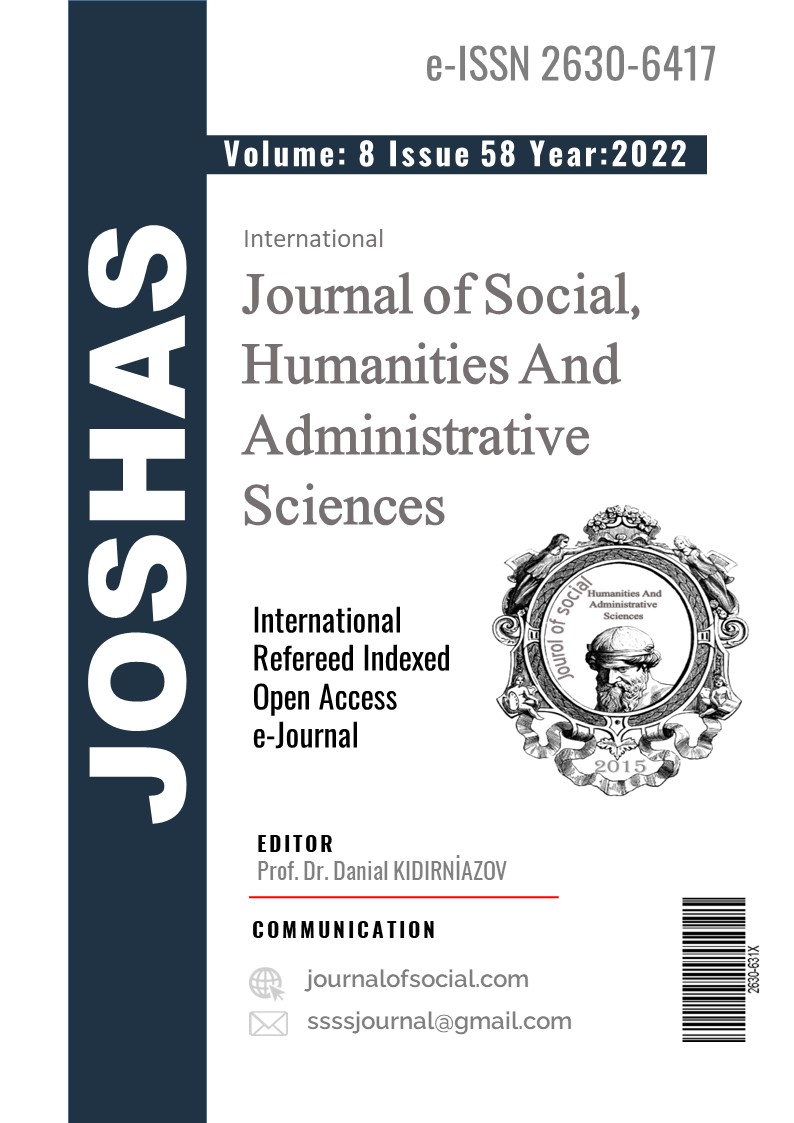Author :
Abstract
Keywords
Abstract
Universities, among the educational institutions where qualified manpower to shape the future of a society are trained, means a collection of buildings in which education and research activities take place physically. As a contemporary educational environment, universities are required by the education system that develops apart from the basic functions of education, research and knowledge production; It includes physical formations that will respond to functions such as work, nutrition, shopping, entertainment, sports, recreation and health. The socio-economic, cultural and recreational needs of the society, which change and develop over time, have made it necessary for universities to be planned as new settlements away from the city centers. Thus, the concept of "campus" emerged and universities began to be established in large areas in areas open to development, based on certain systems. Campus settlements, which have the characteristics of a city in themselves and therefore have a structure that changes and develops over time, are expected to serve for many years, and in this sense, they should be planned in a way that can meet their development and growth needs. In this study discussing the physical growth and change process of Selcuk University Alaaddin Keykubat Campus it is aimed to evaluate the sample area by considering the growth and flexibility criteria of university campuses. As a result, it is possible to say that both the chosen settlement system and the adopted design criteria can directly or indirectly affect the physical growth and development opportunities on campus campuses, starting from the pre-planning stage. It is important for universities, which are expected to serve in the long term and are important for the development of the society, to accurately determine the physical growth and development opportunities in the campuses and to support these determinations with the appropriate settlement system and design criteria, so that they can fulfill these responsibilities in favor of the society for a long time.
Keywords
- 1. Açıkay, S. H. (2015). “Kent İçi Üniversite Kampüslerinin Ekolojik Peyzaj Tasarım İlkeleri Kapsamında İrdelenmesi”, Yüksek Lisans Tezi, İstanbul Teknik Üniversitesi Fen Bilimleri Enstitüsü, İstanbul.
- 2. Ak, S. (2007). “Üniversite Kampüslerinde Tasarım Kriterlerinin ve Yerleşim Sistemlerinin Büyüme ve Gelişme Olanakları Bağlamında İrdelenmesi”, Yüksek Lisans Tezi, Yıldız Teknik Üniversitesi Fen Bilimleri Enstitüsü, İstanbul.
- 3. Anonymous, (1980). Konya Selçuk Üniversitesi Kampüs Planlama ve Programlama Araştırması Ön Hazırlık Raporu, Konya.
- 4. Archive, (2011). Selçuk Üniversitesi Yapı İşleri ve Teknik Daire Başkanlığı, Konya.
- 5. Büyükşahin Sıramkaya, S. & Çınar, K. (2012). Üniversite kampüs yerleşkelerinde ortak kullanım mekanlarının incelenmesi: Selçuk üniversitesi Alâeddin Keykubat Kampüsü Örneği. S.Ü. Müh.-Mim. Fak. Dergisi, 27(3), 6172.
- 6. Çınar, E. (1998) “Üniversite Kampüs Planlaması ve Tasarımı Üzerine Bir Araştırma”, Yüksek Lisans Tezi, İstanbul Teknik Üniversitesi Fen Bilimleri Enstitüsü, İstanbul.
- 7. Dober, R. (1963). Campus Planning, Reinhold Publishing Co., Mass., ABD
- 8. Dober, R. P. (1992). Campus Design, New York USA.
- 9. Doğan, H. H. (2005). Evrenkent Yerleşkeleri ve Kent Yaşamındaki Önemi Örnek olay: İnönü Üniversitesi, II. Ulusal Üniversite Yerleşke Planlaması ve Çevre Düzenlemesi Çalıştayı, 9–10 Haziran, Kahramanmaraş.
- 11. Gürün, D. K. (2003). Kahramanmaraş Sütçü İmam Üniversitesinin Tanıtımı, Üniversite Yerleşke Planlaması ve Çevre Düzenlemesi I. Ulusal Çalıştayı, 16–17–18 Ekim, Malatya.
- 12. Hasol, D. (1998). Ansiklopedik Mimarlık Sözlüğü, İstanbul.
- 13. Irgatoğlu, A.N. (2011). Üniversite Kampusları Fiziksel Gelişim Planlaması Ve Tasarımı: Yozgat Bozok Üniversitesi Erdoğan Akdağ Kampusu Örneği, Yüksek Lisans Tezi, Ankara Üniversitesi Fen Bilimleri Enstitüsü, Ankara.
- 14. İnceoğlu, N. (1987). Halkalı Kampusu Ön Planlama ve Programlama Çalışması, Araştırma Çalışması, İstanbul.
- 15. Karaaslan, M. (1979). Üniversite Kampüs Planlaması, Edirne.
- 16. Karakaş, N. B. (1999). Üniversite Kampüslerinin Fiziksel Gelişim Planı Hazırlama Süreci Ve Bartın Orman Fakültesinin bu Bağlamda Değerlendirilmesi, Yüksek Lisans Tezi, Zonguldak Karaelmas Üniversitesi Fen Bilimleri Enstitüsü, Bartın.
- 17. Kortan, E. (1981). Çağdaş Üniversite Kampüsleri Tasarımı, Ankara.
- 18. Kuyrukçu, Z. (2012), Kampüslerde Fiziksel Değişim Üzerine Bir Araştırma: Selçuk Üniversitesi Alaeddin Keykubat Kampüsü Örneği, Yüksek Lisans Tezi, Selçuk Üniversitesi Fen Bilimleri Enstitüsü, Konya.
- 19. Linde, H. (1971). Hochschulplanung, Dusseldorf.
- 20. Önder, S & Kara Z. (1998). Selçuk Üniversitesi Aleaddin Keykubat Kampüs Alanı Alan Kullanımı ve Planlaması Üzerinde Bir Araştırma, Konya.
- 21. Şen, İ. (1987). Üniversite Kampus Planlamasında Aktiviteler Cins ve Organizasyonu, Yüksek Lisans Tezi, Yıldız Teknik Üniversitesi Fen Bilimleri Enstitüsü İstanbul.
- 22. Türeyen, M. (2002). Yükseköğretim Kurumları- Kampuslar, İstanbul.
- 23. Yekrek, T. (1999). Üniversite Kampüsleri Yerleşim Sistemlerinin Fiziksel Planlamayla Olan İlişkisi ve Önemi, Yüksek Lisans Tezi, Yıldız Teknik Üniversitesi Fen Bilimleri Enstitüsü, İstanbul.
- 24. Yıldızoğlu, Z. (2006). Üniversite Yerleşkeleri Fiziksel Gelişim Planlaması Ve Tasarımı: Çanakkale Onsekiz Mart Üniversitesi Terzioğlu Yerleşkesi Örneği, Yüksek Lisans Tezi, Çanakkale Onsekiz Mart Üniversitesi Fen Bilimleri Enstitüsü, Çanakkale.
- 25. Web Address 1, https://kamfi.net/selcuk-universitesi-alaeddin-keykubat-kampusu-fotograflari/, erişim tarihi 05.11.2021.





